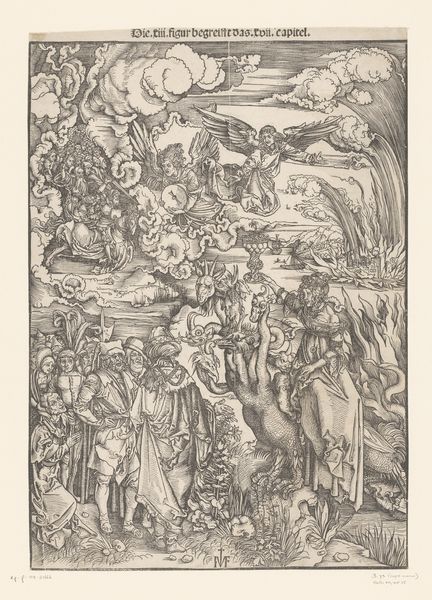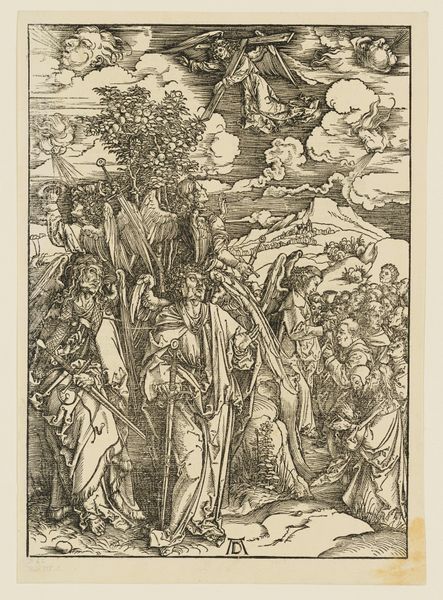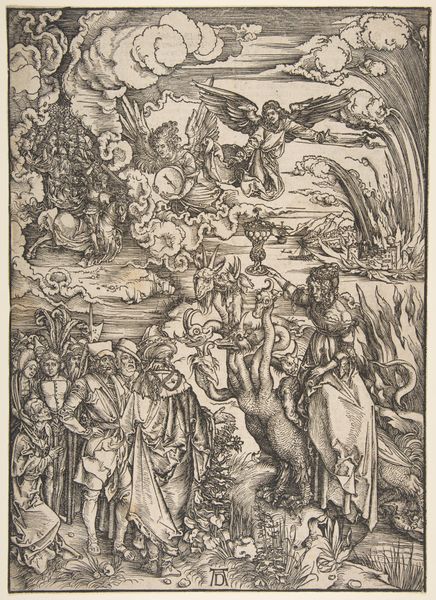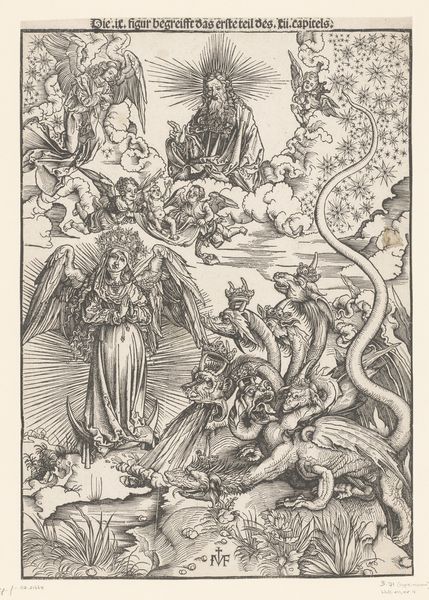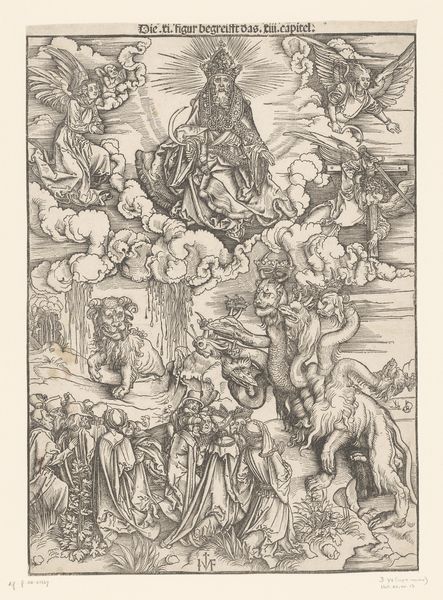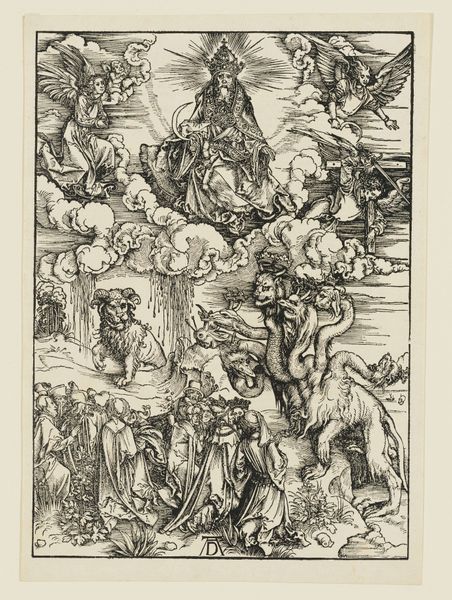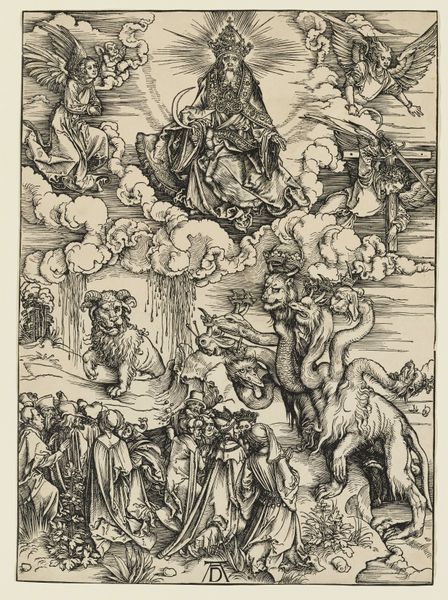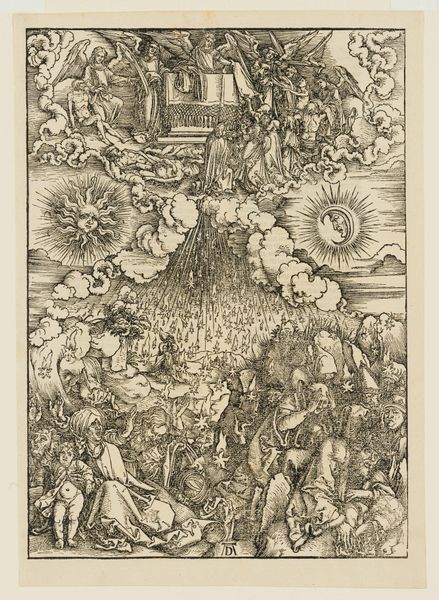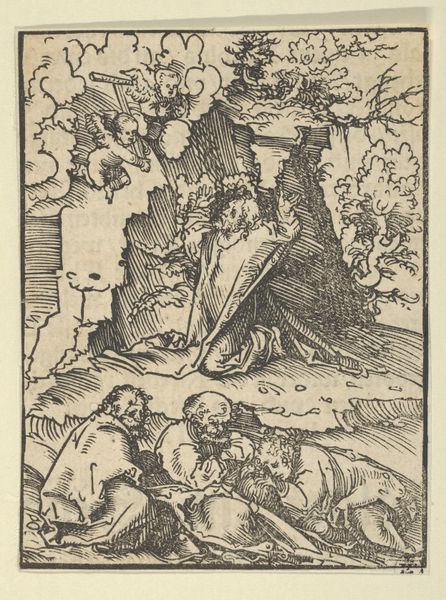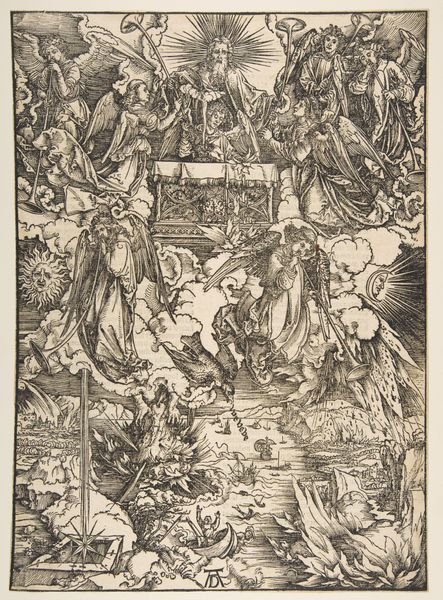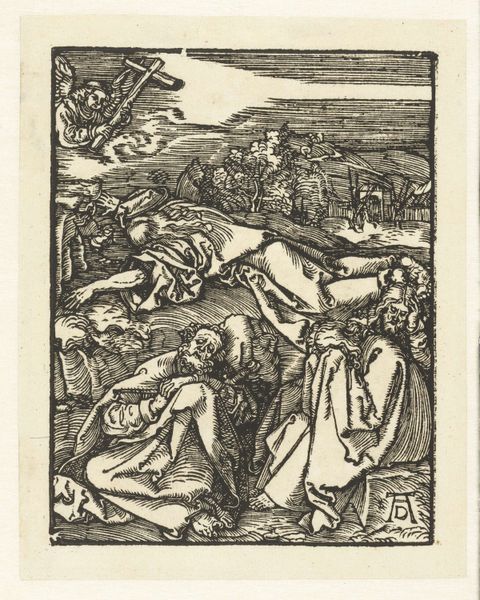
print, woodcut
#
narrative-art
# print
#
figuration
#
woodcut
#
line
#
history-painting
#
northern-renaissance
Dimensions: 15 1/2 x 11 1/8 in. (39.37 x 28.26 cm) (image)
Copyright: Public Domain
Albrecht Dürer created this woodcut, "The Whore of Babylon," around 1496-97 as part of his Apocalypse series. The image depicts a scene from the Book of Revelation, laden with symbolism about the end times and divine judgment. Dürer was a German artist working during a period of immense religious and social upheaval. The Protestant Reformation was on the horizon, and many felt that the Catholic Church had become corrupt. This print can be interpreted as a critique of the papacy, with the "whore" symbolizing the perceived corruption and decadence of Rome. The seven-headed beast she rides alludes to the unholy Roman Empire. By using the popular medium of the woodcut, Dürer was able to disseminate this potent message to a wide audience. Understanding this artwork requires us to delve into the history of religious and political conflict in 16th-century Europe. Art historians consult religious texts, political pamphlets, and social histories to better understand the original context of the artwork. This helps us to see how art engaged with, and sometimes challenged, the established power structures of its time.
Comments
No comments
Be the first to comment and join the conversation on the ultimate creative platform.

